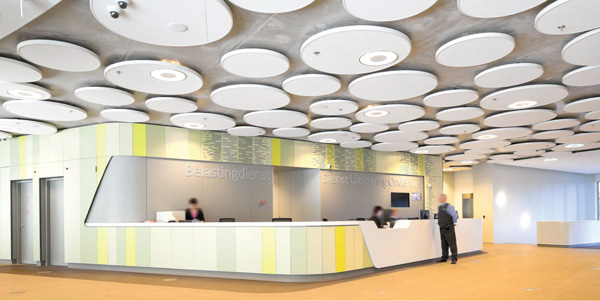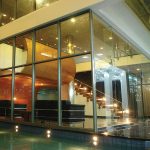
\imaginethese.blogspot.com
It is not only in theory but in practice, that architecture is a complex form of art. It is complex in its nature as it entails planning, creative designing and executing a three dimensional space, reflective of its function.The creator must have astute observations of the surrounding environment, the cultural and functional needs and the immediate and long term impact to ensure the longevity of the creation. It is not only these external factors that need to be incorporated to ensure a successful creation; but also a complete understanding of light and shadows, colour and texture that make an architectural solution complete.
By Vinuri Ethapane
The play on light and shadow within an architectural space runs closely alongside the use of colour and texture. Many architects use these four components of art to create varying ambiances and experiences in the multitude of spaces within a building. Colour is often used in architectural spaces to offer a meaning of significance, to distinguish a space, and to add a sense of vibrancy. Colour is not considered a generator of form, however, is used to enhance or modify the visual perception of form. A more direct use of colour is seen where colour is often used in the different components within a space to distinguish one element from the other. The floor is often given a darker shade to that of the walls and the roofing element is further highlighted with another colour. This often gives clarity and distinction to a space, extenuating the different components of the interior and exterior of the entire space.
The human reaction to colour play a significant role in the colour choices made by designers. It is not only a change in a visual level; a behavioural change can be identified as humans respond to the different colours of spaces. For example bright colours closer to the red and orange hues often give the users a sense of warmth and energy, where as the use of dark colours closer to blacks, blues and greens not only symbolise a cooling effect but creates a sense of calmness within the occupant. Thus the artist of the space must be apt at distinguishing the correct hues to suit not only the visual ambiance of the space, but also to better suit the mind and inner conscience of the user, which again should be one with the function of the given space.
The application of texture allows the creator to not only mimic nature by recreating natural textures on interior walls and floors but also aids in giving the space a natural rustic feel.
Texture is a term used to denote the quality of the surface of an object. Texture can manipulate a surface to give a varying degree of depth to an element that would otherwise be flat or visually monolithic. Generally a texture is given to a surface as a visual enhancement, as the surface undulations create a quality of movement and rhythm and give the overall application a three dimensional intensity. In building designs, the artist of the space gives the floor and wall elements varying textures to distinguish one from the other. This closely follows the impact colour has on the varying elements, however, further enhancing through the tactile nature of textures. Texture is broken down into two components – tactile and visual. The visual component of textures is that which can be perceived where as the tactile components is that which can be felt. It is these two properties of texture that the artist will use to manipulate a space to further enhance the experiences. The application of texture allows the creator to not only mimic nature by recreating natural textures on interior walls and floors, but also aids in giving the space a natural rustic feel. Often we find that texture is not an entity of its own, but a modification of an existing element, or varying applications of one component. For example walls can be easily modified where a texture finish of the plaster creates a three dimensional surface, giving the wall not only a visual change to that of a flat application, but also a tactile change. Floors are often smooth finished in the interior spaces and a rough paving on the outer spaces to not only indicate a transition from indoor to outdoor, but also to create the distinction between built and unbuilt.
Colour and texture often aid in giving significance to form, hierarchy and interior space progression. The application of colour and texture can be subtle or direct, chaotic or calm. Whichever the application maybe, its ability to generate a multitude of responses enables the artist to manipulate and transform basic architectural elements to come to life.

















